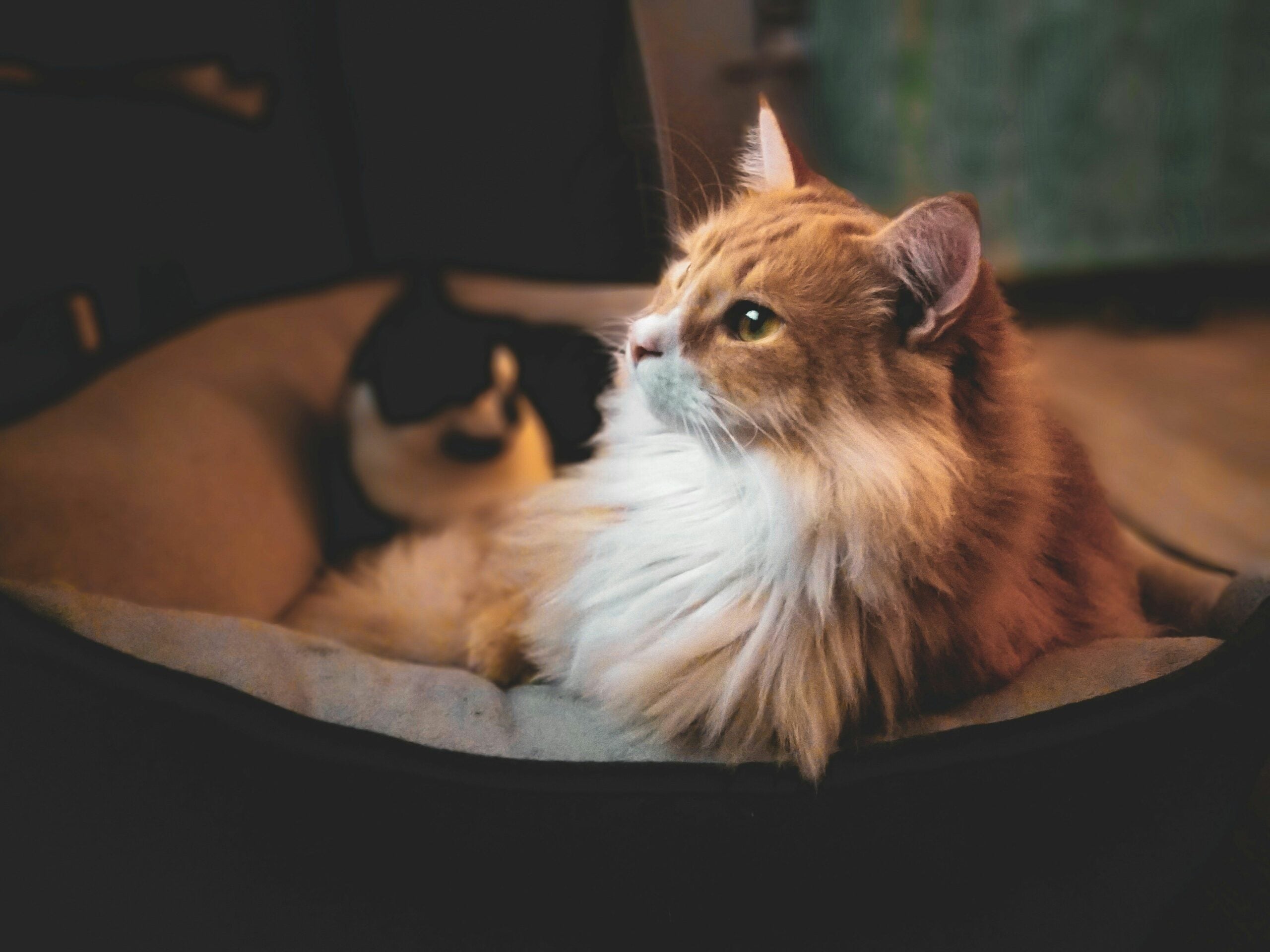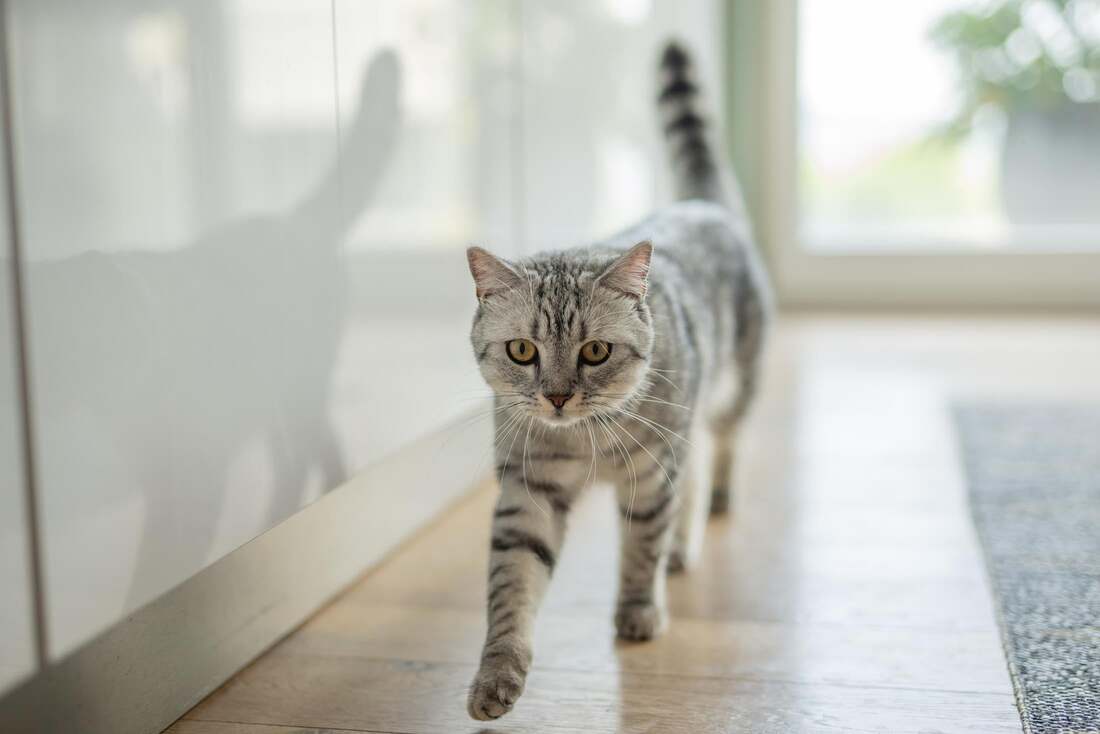Have you ever wondered if your two furry friends are really happy with just one litter box?
Living with multiple cats can sometimes be challenging, especially when it comes to their toilet habits.
In fact, each cat needs its own litter box, and it is recommended to have at least one more litter box than the number of cats in the household.
In this article, you will learn why every cat needs its own litter box, what problems can arise when sharing litter boxes, and how you can bring harmony into your cat's life with the right number and placement of litter boxes.
Why every cat needs its own litter box
Cats are very clean animals that value their privacy and cleanliness. This is especially true for their litter box. If several cats have to share a litter box, this can lead to stress and uncleanliness. This is because each cat has its own smell and does not want to mix it with the smell of other cats. This can lead to conflicts and even to them no longer using the litter box.
So, for the well-being of your cats, it is important that each one has its own litter box. Here are some reasons why this is so:
- Personal space : Cats need their own space to feel safe and comfortable.
- Hygiene : A clean litter box is extremely important for the cat, and the more cats use it, the faster it becomes dirty.
- Stress reduction : When cats do not have to compete for use of the litter box, stress levels are reduced.
If you have multiple cats, try to provide at least one litter box for each cat. This can help prevent marking behavior and soiling. Cats are very territorial animals and their own litter box is part of their territory. By giving each cat their own area, you promote harmony and health in your multi-cat household.
So it's not just a matter of convenience, but an important measure for the health and happiness of your cats. Having a separate litter box for each cat means less stress for the animals and ultimately for you as the owner. It's a simple step that can make a big difference in your life with your furry friends.
Problems with sharing a litter box
Cats are territorial animals by nature and the litter box is an intimate space that they are reluctant to share. If two cats are forced to share a litter box, this can lead to territorial tension . The animals may start to avoid the litter box or mark in other areas of the home to claim their territory.
The cleanliness of the litter box is another important factor. Cats have high standards when it comes to the cleanliness of their litter box, and a litter box used by several cats quickly becomes dirty. This can lead to the cats no longer using the litter box and instead looking for other places in the house to relieve themselves.
A shared litter box can also lead to stress , especially if one cat disturbs or ambushes the other while going to the toilet. This can cause several problems:
- The cats may adopt a defensive posture and not be able to squat properly.
- Uncleanliness can occur because the cats do not feel safe near the litter box.
- The toilet may become a source of stress rather than a place of relief.
To prevent these problems, it is important that each cat has its own toilet area . This reduces conflict and encourages clean behavior. When each cat has its own toilet, they can live out their natural instincts and feel safe, which contributes to a more harmonious coexistence.
Expert opinion: How many litter boxes for 2 cats?
Experts agree that in a household with two cats, the number of litter boxes plays an important role in the well-being of the animals. The general recommendation is to have at least one litter box per cat plus one extra . This means that ideally there should be three litter boxes available for two cats. This is to avoid conflicts and to allow the cats to find a clean litter box at any time.
The rule of "one litter box per cat plus one extra" is based on understanding the natural needs of cats. Cats are territorial animals and need their own place to retreat. Some important aspects are:
- Personal area : Each cat has its own toilet to feel comfortable.
- Hygiene : Multiple toilets mean that each one is used less often, which increases cleanliness.
- Stress avoidance : Less competition for toilet use reduces stress in cats.
However, there are also experts who emphasize that the number of litter boxes can depend on the individual situation . For example, cats that get along very well and have no problems with dividing their territory could also get by with fewer litter boxes. It is important that cat owners observe their animals' behavior and provide more litter boxes if they show signs of stress or uncleanliness.
In summary, the optimal number of litter boxes for two cats is at least three, but this number can vary depending on the cats' individual needs and the owner's observation. It is crucial to pay attention to the cats' signals and make sure they feel comfortable and safe in their home.
Tips for the care and placement of 2 litter boxes
The correct placement of two litter boxes is crucial for the well-being of your cats. They should be placed in quiet places where your cats can do their business undisturbed . Avoid busy passageways or noisy areas, as cats prefer privacy when going to the toilet.
When caring for the litter box, it is important to change the litter and clean the box regularly . It is best to check the manufacturer's recommendations on how often the litter should be changed. A mild cleaning agent without strong odors and without chemicals will help to keep the box clean and appealing to the cat .
Good hygiene practices include:
- Daily removal of lumps and solid excretions
- Complete litter change at least once a week
- Regularly clean the bowl with water and mild detergent
Make sure each litter box is easily accessible . This means that your cats can reach the litter boxes without any obstructions. It is also advisable not to place the litter boxes directly next to each other to give the cats the feeling that they have several options.
Make sure the litter boxes are big enough for your cats to feel comfortable and safe in. If the litter box is too small, your cats may avoid it. Sufficient space and regular cleaning are the key to a harmonious cat household with two litter boxes.
Exceptions: When can 2 cats use 1 litter box?
There are exceptions where two cats can share a litter box without causing problems. If the cats have grown up together from a young age and have a particularly close relationship, they may show less territorial behavior and be willing to share a litter box.
Another exception could be if a cat is significantly older or has health problems and no longer uses the litter box as often. In such cases, the younger or healthier cat could use the litter box more often without causing conflict.
Here are some points to consider when considering allowing two cats to use one litter box:
- Observe your cats’ behavior closely.
- Pay attention to any signs of stress or conflict.
- Make sure the litter box always stays clean and hygienic.
Despite these possible exceptions, it is important to stress that a separate toilet should remain the rule for every cat. Only if you are sure that your cats feel comfortable and stress-free with only one toilet can you consider this option. Always pay attention to the well-being of your animals and be ready to provide additional litter boxes at the first sign of disagreement.
Which litter box for 2 cats? A buying guide
If you have two cats, choosing the right litter box is especially important. It should offer enough space for both cats to feel comfortable. Size and model are crucial factors. A litter box that is too small can lead to cats avoiding it, whereas a suitably large litter box increases acceptance and well-being.
When choosing a model, keep in mind that many cats prefer open litter boxes because they are less cramped. While closed models may be more comfortable for humans because they trap odors and litter better, they can be uncomfortable for cats, especially if they cannot move around freely in them.
Materials also play a role. A litter box should be easy to clean and not contain any harmful substances. Here are some materials that are often used:
- Plastic : Lightweight and easy to clean, but can absorb odors.
- Stainless steel : Hygienic and robust, but often more expensive.
- Plant-based materials : Environmentally friendly, but not always as durable.
Stability is another key element. The litter box should have a solid base so that it doesn't slip or tip over when two cats use it at the same time. A stable litter box provides security and helps your cats enjoy using the litter box.
Finally, it is important that you consider purchasing more than one litter box. As mentioned above, experts recommend at least one litter box per cat plus an extra one. This will ensure that conflicts are avoided and your cats always have access to a clean litter box.
Flappie: The intelligent solution for a clean home
Flappie offers a smart cat flap that solves the problem of cats bringing prey such as mice or birds into the home. The flap is installed at the entrance of the home and uses selective access control and prey detection . It uses a camera and artificial intelligence to ensure that your cat only comes into the house without prey. The Flappie app also informs you with push notifications and offers the option to manage settings and view videos and photos of your cat.
The benefits of the Flappie cat flap are many and help keep your home clean and prey-free. Here are some of the main advantages :
- Selective access control : Prevents cats from entering the house with prey.
- Prey detection : A camera with AI technology identifies prey.
- Flappie App : Allows remote control of the cat flap and provides insights into your cat's life through statistics and recordings. With these innovative features, Flappie ensures a prey-free home while also offering you exciting insights into your cat's life.
Frequently Asked Questions
Why 2 litter boxes for one cat?
Each cat should have its own litter box to avoid stress and mess. Cats value privacy and cleanliness, and sharing a litter box with other cats can lead to conflict. It is recommended to provide at least one litter box for each cat to prevent marking behavior and mess.
How many litter boxes for 2 cats?
Ideally, you should provide three litter boxes for two cats. The general recommendation is to have at least one litter box per cat, plus one extra to avoid conflict and allow the cats to find a clean box at any time.
Can two cats share a litter box?
In principle, every cat should have its own litter box. However, there are exceptions where two cats can share a litter box, for example if they have grown up together since they were young or if one cat is significantly older or has health problems. It is important to observe the cats' behavior closely and look out for signs of stress or conflict. Nevertheless, a separate litter box for each cat should remain the rule.
Which litter box for 2 cats?
The litter box should offer enough space and the size and model are crucial. Many cats prefer open litter boxes because they are less cramped. The material should be easy to clean and should not contain any harmful substances. A sturdy litter box provides security and helps your cats to enjoy using the litter box. It is important to have more than one litter box to avoid conflicts and ensure cleanliness.





Share:
Cat litter box in the kitchen: is that really a good idea?
Cats bite each other while grooming – Why?